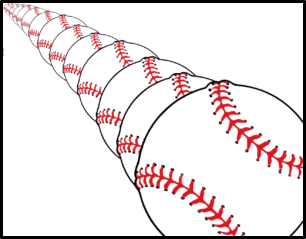
Exploring Bat Speed’s Purported Link with Contact Rates
By Ken Cherryhomes ©2024
To reverse engineer the proposition that heightened bat speed contributes to improved bat-to-ball contact rates, requires investigating the intricacies of this relationship. The systematic approach to data collection demands meticulous attention to detail. The goal is to explore the nuances between heightened bat speed and a batter’s capacity to consistently connect with the ball. The absence of empirical evidence to definitively support this correlation, coupled with the possibility that proponents of the connection may be overlooking certain parameters or selectively analyzing data, raises questions about the validity of the claim.
Stepping back from the numbers, we’re reminded that baseball training is an industry. Coaches and institutions seek to gain a competitive advantage. It is not unreasonable to consider that, similar to other industries, data can be wielded to craft narratives or bolster assertions. The pursuit of elevating bat speeds and refining contact rates remains a noble endeavor. However, this pursuit also reveals a fundamental truth – without a profound comprehension of the underlying nuances, data has the potential to depict a semblance of truth even when empirical evidence to substantiate it is scarce or nonexistent.
In today’s baseball climate, the pursuit of improvement is unending, pushing players and coaches to seek new ways to enhance performance. One avenue is the purported connection between heightened bat speed and improved contact rates. This concept has given rise to coaching programs like those offered at Driveline, centered around bolstering bat speed, and have ignited much debate. However, as with any claim, the path to understanding is the consideration of the multitude of variables necessary for a data-driven analysis. While bat speed increases influence on batted ball exit velocity and power can be recognized empirically, bat-to-ball prowess has more to do with swing timing decisions than anything else, including bat speed.
The logic of increasing bat speed is straightforward: a faster swing equates to amplified power. It’s important to note that bat speed and time metrics like swing time, should not be conflated or confused with one another. The concept of increasing bat speed correlates to increased contact, has, in turn, sparked a range of initiatives and discussions centered around the idea of elevating bat speed to enhance performance. Yet, as with any pursuit, the path to uncovering truth demands granular data scrutiny.
To establish this correlation, gathering and meticulously examining a trove of data is imperative – data that encompasses bat speeds, player profiles, contact rates, and more. This involves an investigation into the interplay between fluctuations in bat speed and the subsequent shifts in contact rates. Given that any in-house data collection would yield sample sizes far too small to achieve a meaningful statistical correlation, turning to Statcast becomes essential. Statcast, a repository abundant with baseball statistics, forms the bedrock of this kind of inquiry.
Within this world of numbers and statistics, patterns may emerge, drawing our attention to those batters who’ve experienced a surge in bat speed over a designated timeframe. By scrutinizing their contact rates before and after this transformation, paralleled by a similar analysis for those encountering a decline in bat speed. Amidst these ebbs and flows, the spotlight also turns toward a control group—players whose bat speeds remain steady.
Important to evaluating bat speed fluctuations in our sample is the consideration of player age and experience. The passage of time, a reality for every athlete, introduces another layer of complexity. Distinguishing the factors influencing contact rates resulting from heightened bat speed versus those influenced by age and experience-related shifts in performance becomes a nuanced task. The interplay of variables persists, shaping the relationships between these factors. Notably, player experience over time can contribute to changes in bat-to-ball rates, regardless of significant changes in bat speed.
Venturing further, a sobering reality takes shape—the construction of a substantial control group, a cornerstone of scientific inquiry, presents its own set of challenges. Baseball’s complex dynamics and the inherent variability within individual performances render this task an elusive endeavor at best. The ideal control group needed to validate this hypothesis of bat speed correlating to batted ball rates renders this nearly impossible, not unlike the proposition itself.
As this data analysis takes shape, a vivid image begins to emerge. The notion that heightened bat speeds intrinsically lead to refined contact rates encounters a formidable challenge. Baseball does not exist in a vacuum. Factors such as pitch types, pitcher expertise, game contexts, batted ball spray philosophy, hit types, and the batter’s psychological state converge. Another example of increased bat speed is perception. For instance, pulling pitches can result in contact points that potentially increase the barrel travel distance, thereby reflecting higher bat velocities. Were a batter to transform from a opposite field power ally hitter into a pull hitter, this would influence their bat speed at contact measurements. In this context, the spotlight shifts to an observational process guided by contextual considerations.
Recognizing the impossibility of directly correlating bat speed increases with bat-to-ball contact rates introduces a significant challenge in data observation. This highlights the intricate relationship between bat speed and contact rates, underscoring the complexity of the analysis and the limitations in drawing absolute conclusions.